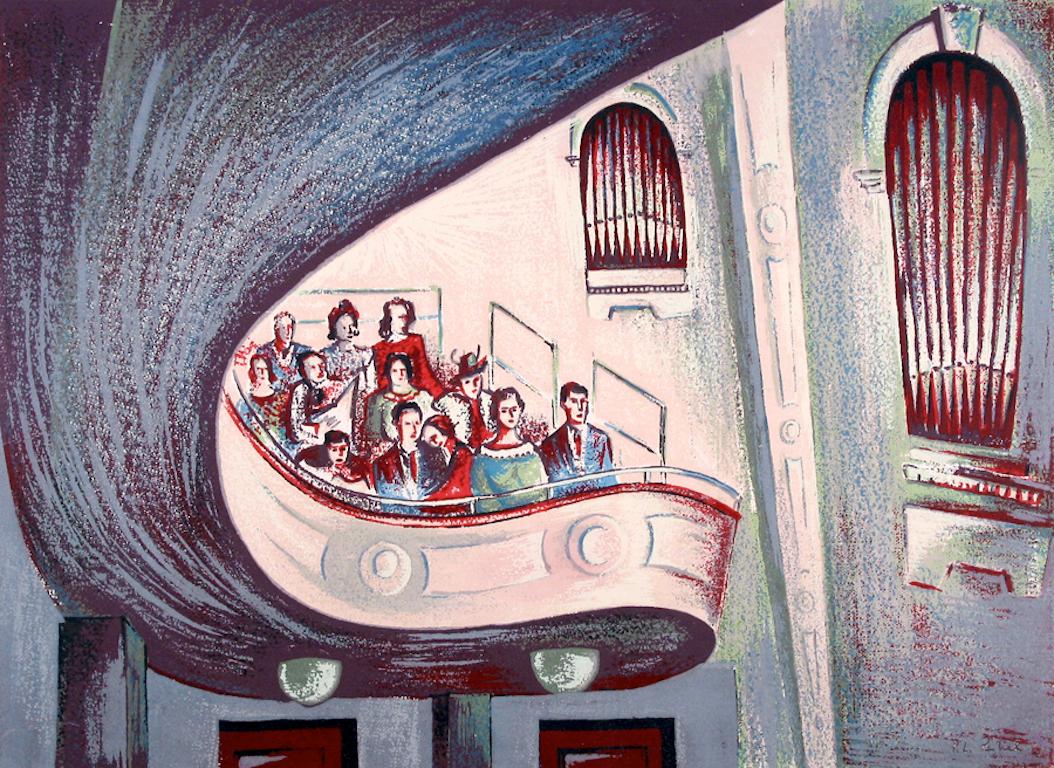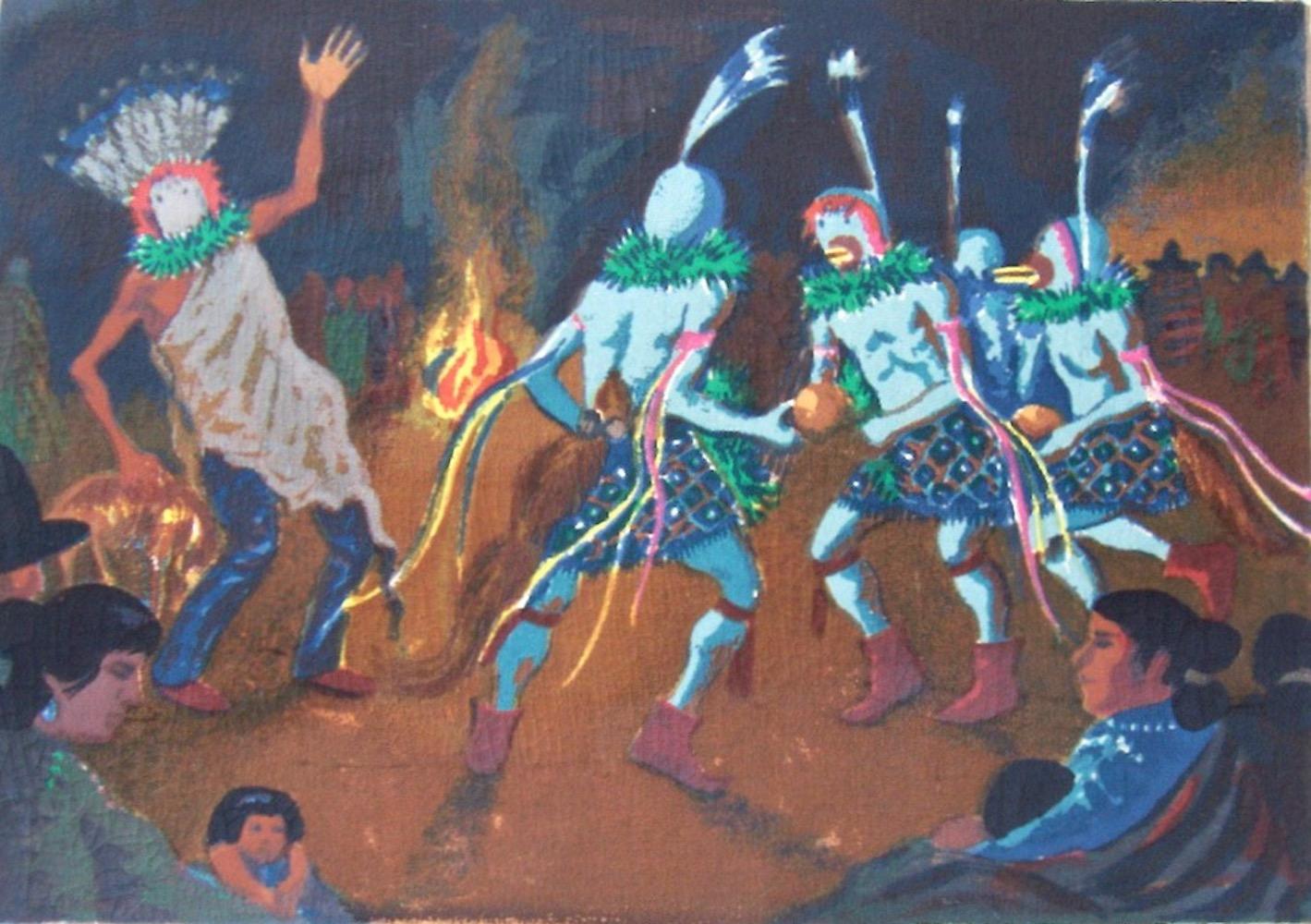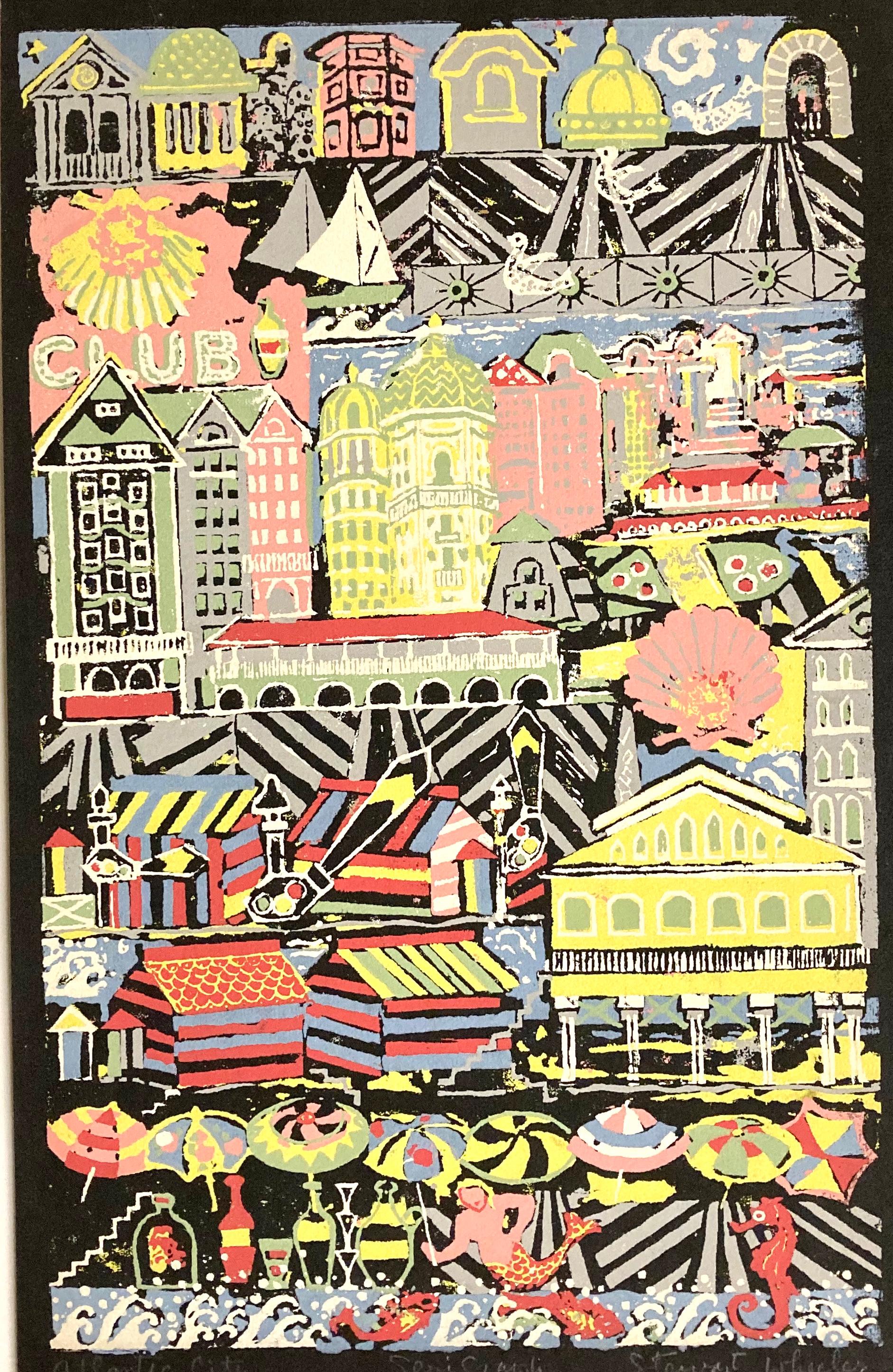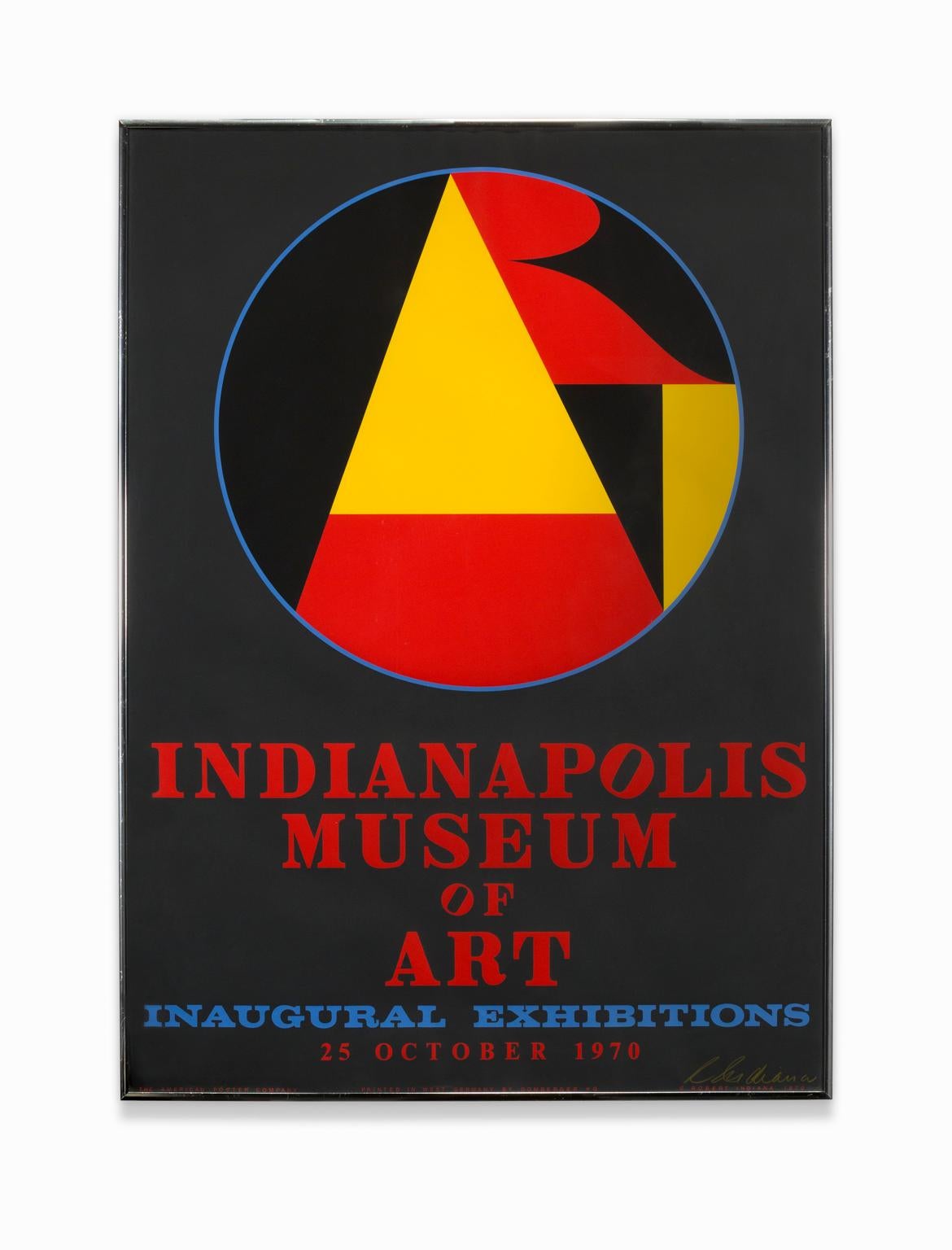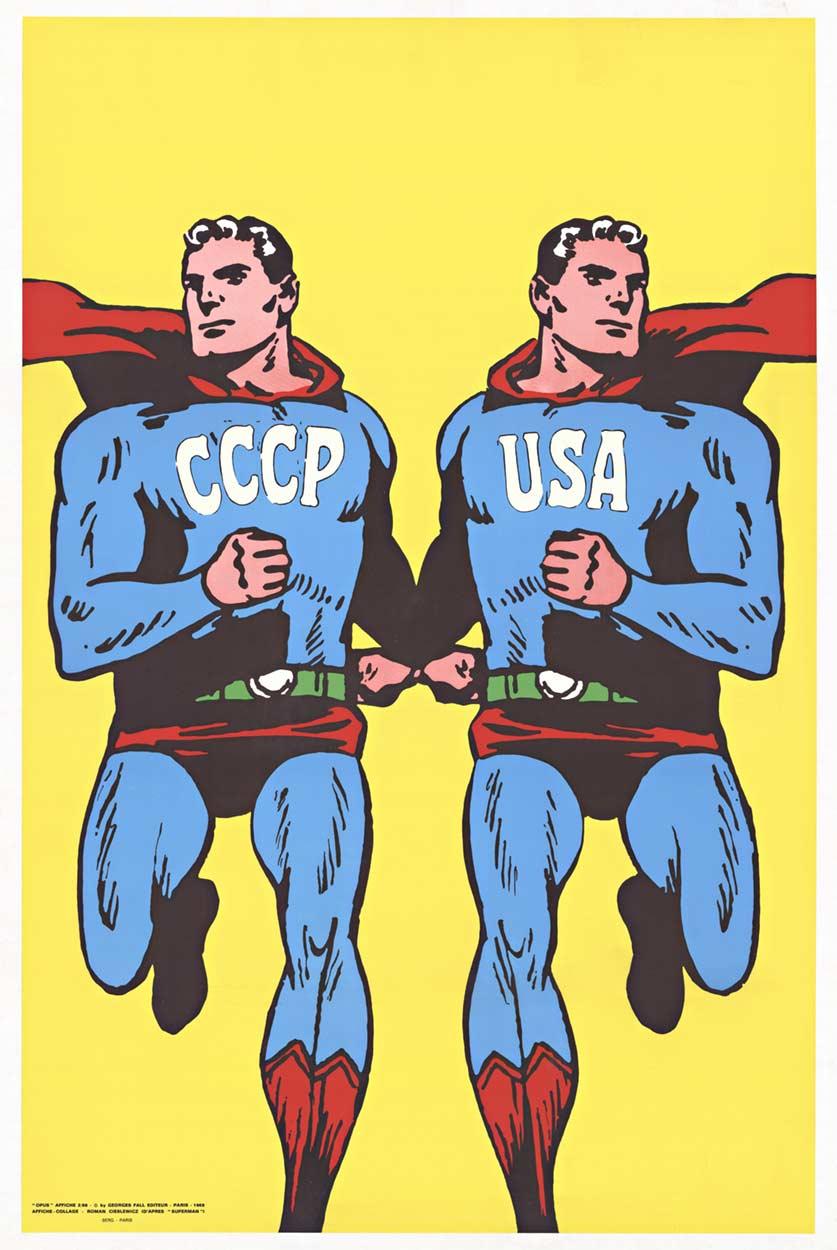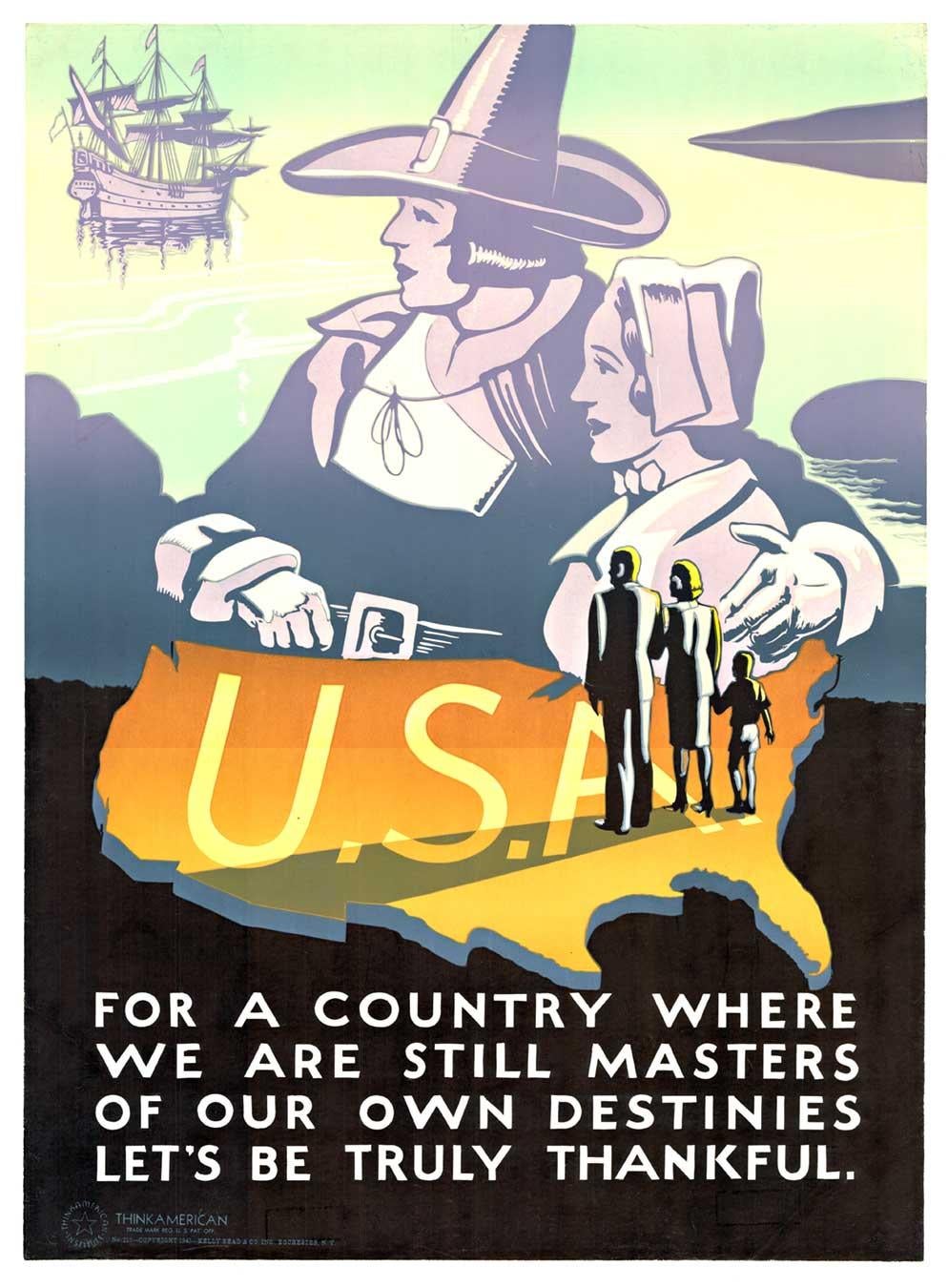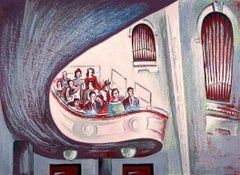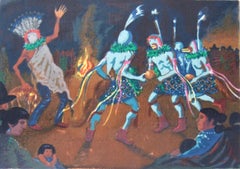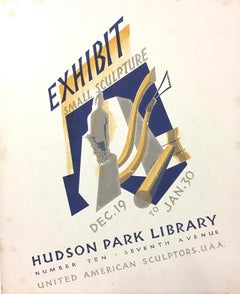
"Chicago - United Air Lines" Original Vintage Mid-Century Modern Airline Poster
View Similar Items
1 of 4
Unknown"Chicago - United Air Lines" Original Vintage Mid-Century Modern Airline Poster 1962 ca.
1962 ca.
About the Item
- Creation Year:1962 ca.
- Dimensions:Height: 40 in (101.6 cm)Width: 25 in (63.5 cm)
- Medium:
- Movement & Style:
- Period:
- Condition:Very Fine (A) Condition. Great Color. Linen backed.
- Gallery Location:Boston, MA
- Reference Number:Seller: USC263491stDibs: LU133226192422
You May Also Like
- "Balcony" 1938 WPA Print Mid 20th Century American Broadway Theatre ModernismBy Leon BibelLocated in New York, NY"Balcony" 1938 WPA Print Mid 20th Century American Broadway Theatre Modernism. Silk screen on paper, 15” x 20". Numbered 15/20 lower left. Pencil si...Category
1930s American Modern Figurative Prints
MaterialsPaper, Screen
- Anna Barry, Navajo Yei Bei ChaiBy Anna BarryLocated in New York, NYAnna Barry (1907-2001), and her husband, the artist Ira Moskovitz, spent years in New Mexico in the late 1930s and 40s. They returned permanently to New York City in 1949. The screen print (also known as silk screen or serigraph) Navajo Yei...Category
Mid-20th Century American Modern Figurative Prints
MaterialsScreen
- Anthony Velonis, Exhibit, Small SculptureBy Anthony VelonisLocated in New York, NYAnthony Velonis (1911-1997) was an extremely innovative artist. He learned the technique of screen printing, also known as silkscreen, (for which he also coined the term serigraphy) while working with a wall paper manufacturer. Unusual for fine prints, the image is made by the artist in the same direction as it will print, as the colored inks are forced through fabric (silk) directly onto a paper surface. (He also invented a machine that could print onto column-shaped items such as cocktail glasses or make-up bottles and a rack system for drying sheets of paper with wet ink in which the sheets are just inches apart.) The technique allows extreme versatility on the part of the artist and the ink tends to sit on top of the paper rather than soak into the fibers. In 1934 Velonis used this new technique on Mayor LaGuardia's NYC Poster...Category
Mid-20th Century American Modern Abstract Prints
MaterialsScreen
- Stewart Wheeler, Atlantic City (New Jersey)Located in New York, NYThe little that is know about the painter and printmaker Stewart Wheeler indicates that most of his career was spent in Philadelphia, Pennsylvania. And...Category
Mid-20th Century American Modern Landscape Prints
MaterialsScreen
- "Indianapolis Museum of Art Inaugural Exhibitions", Color Silkscreen, SignedBy Robert IndianaLocated in Detroit, MI"Indianapolis Museum of Art Inaugural Exhibitions", 25 October 1970, is an eye popping large bold colorful geometric abstract silk screen. It is signed on the lower right. Robert Indiana, one of the preeminent figures in American art since the 1960s, played a central role in the development of assemblage art, hard-edge painting, Pop art, Neo-Dada, American Modernism and Modern Art. A self-proclaimed “American painter of signs,” Indiana created a highly original body of work that explores American identity, personal history, and the power of abstraction and language, establishing an important legacy that resonates in the work of many contemporary artists such as Andy Warhol, Keith Haring, Roy Lectenstein, David Hockney, Romero Britto, Richard Hamilton and Robert Rauschenberg who make the written word a central element of their oeuvre. Robert Indiana was born Robert Clark in New Castle, Indiana on September 13, 1928. Adopted as an infant, he spent his childhood moving frequently throughout his namesake state. At 14 he moved to Indianapolis in order to attend Arsenal Technical High School, known for its strong arts curriculum. After graduating he spent three years in the U.S. Air Force and then studied at the Art Institute of Chicago, the Skowhegan School of Sculpture and Painting in Maine, and the Edinburgh College of Art in Scotland. In 1956, two years after moving to New York, Indiana met Ellsworth Kelly, and upon his recommendation took up residence in Coenties Slip, where a community of artists that would come to include Kelly, Agnes Martin, James Rosenquist, and Jack Youngerman had studios. Indiana, like some of his fellow artists, scavenged the area’s abandoned warehouses for materials, creating sculptural assemblages from old wooden beams, rusted metal wheels, and other remnants of the shipping trade that had thrived in Coenties Slip. The discovery of 19th century brass stencils led to the incorporation of brightly colored numbers and short emotionally charged words onto these sculptures as well as canvases, and became the basis of his new painterly vocabulary. Although acknowledged as a leader of Pop, Indiana distinguished himself from his Pop peers by addressing important social and political issues and incorporating profound historical and literary references into his works. In 1964 Indiana accepted Philip Johnson’s invitation to design a new work for the New York State Pavilion at the New York World’s Fair, creating a 20-foot EAT sign...Category
1970s American Modern Abstract Prints
MaterialsPaper, Ink, Screen
$1,760 Sale Price20% Off - "Homo" VerneBy Geoffrey ArchboldLocated in Fairlawn, OH"Homo"Verne, (Still Life with wine bottle, wine glass, glass of beer and dice) Pochoir printed on black textured colored paper, c. 1930 Signed and numbered in white pencil by the art...Category
1920s American Modern Still-life Prints
MaterialsScreen
Recently Viewed
View AllMore Ways To Browse
Vintage Lake Michigan
Michigan Poster
Mid Century Airline Poster
Blue Lake Poster
Original Vintage Posters Chicago
Michigan Vintage Posters
Michigan Vintage Poster
Vintage Michigan Posters
Vintage United Airlines Poster
Chicago Airline Poster
Chicago United Airlines Poster
Vintage London Poster
War Watch
Antique Posters Paris
Vintage Home Poster
Colorful Pop Art Sculpture
Indian Hand Painting
Ballet Sculpture
